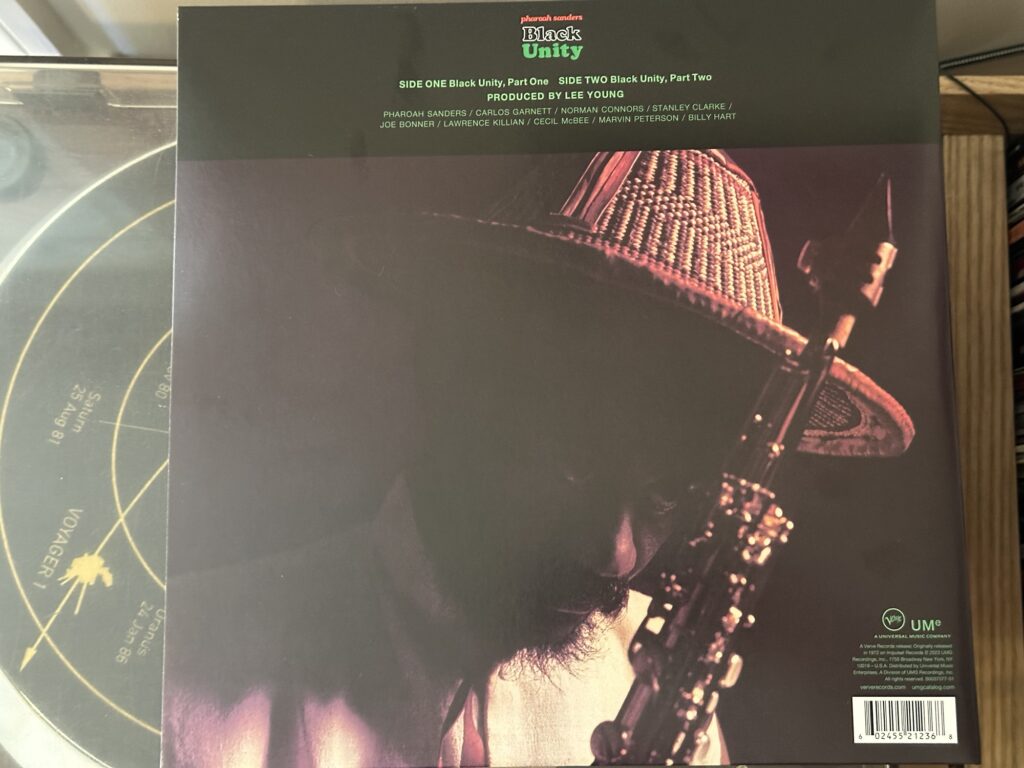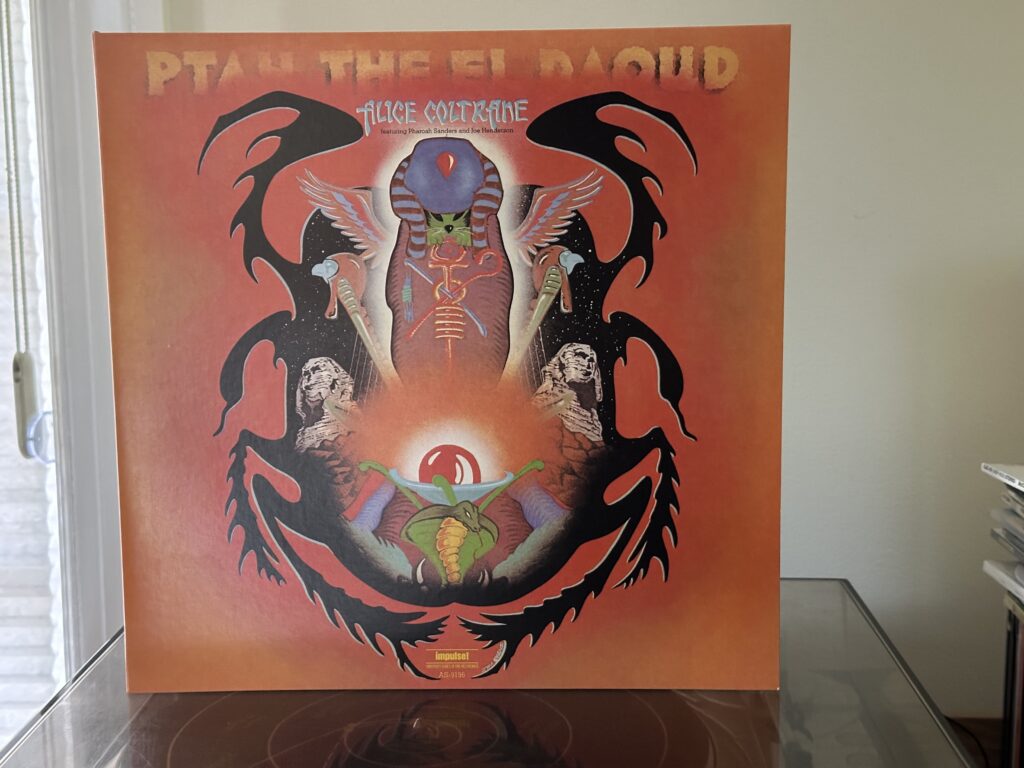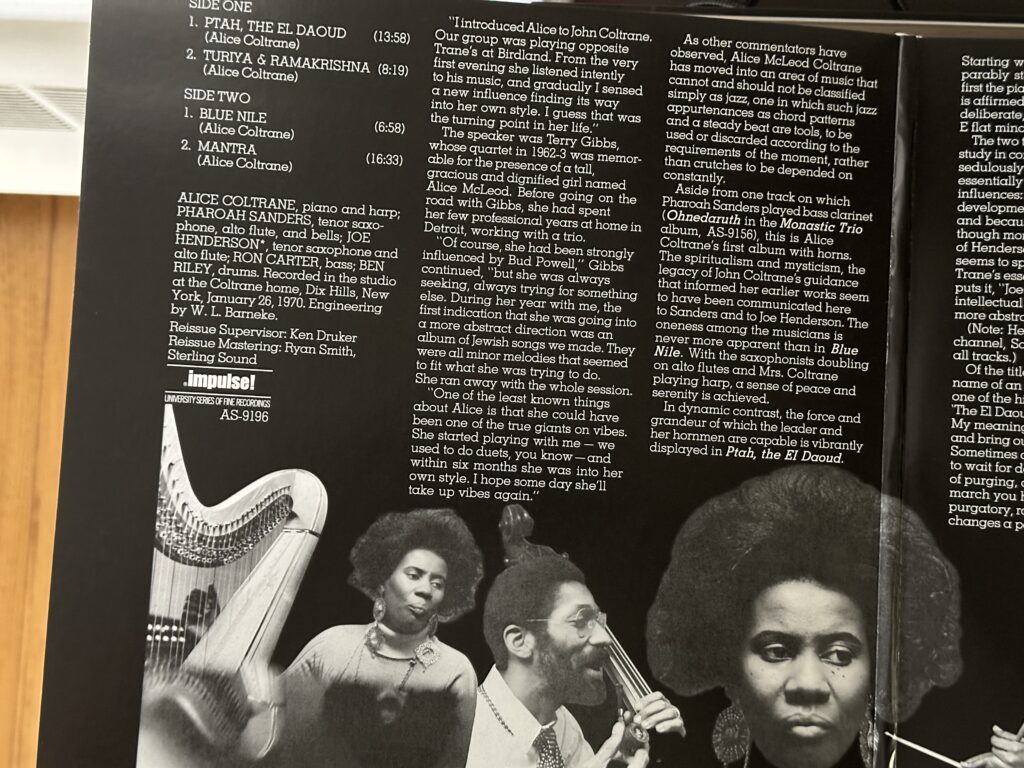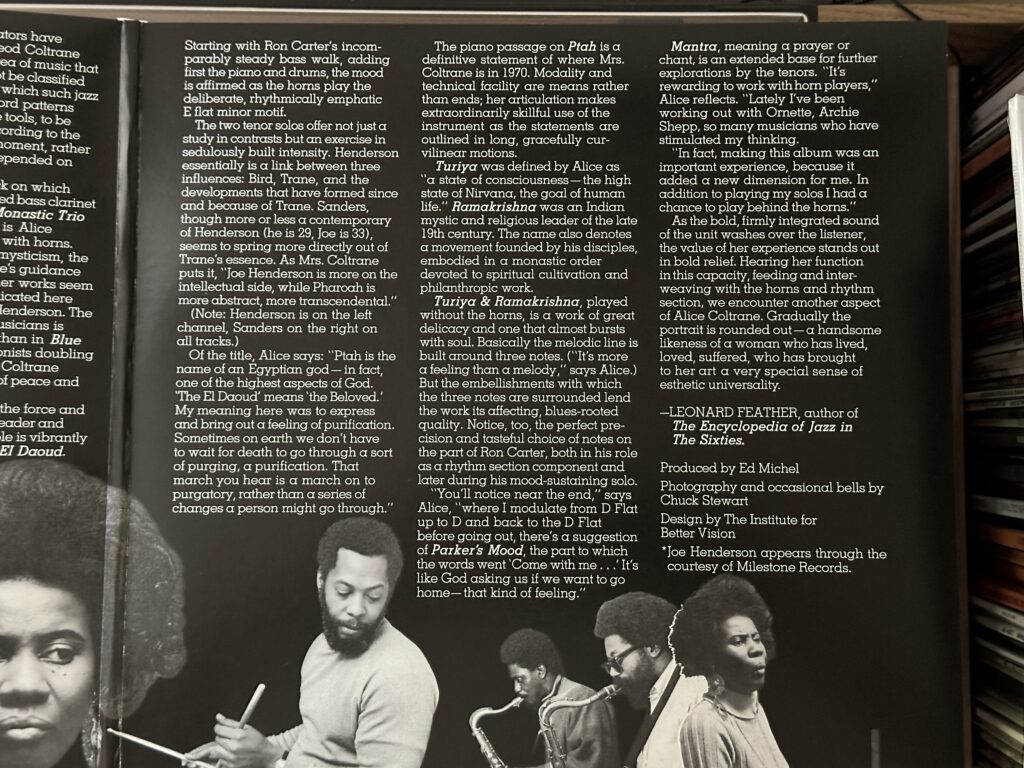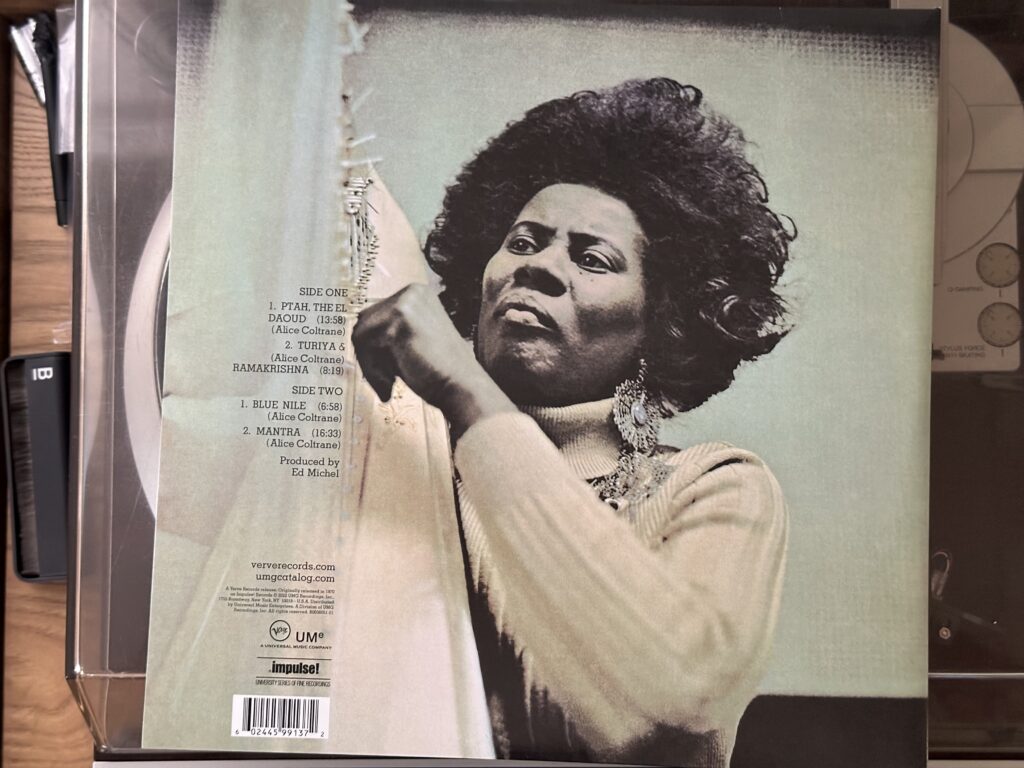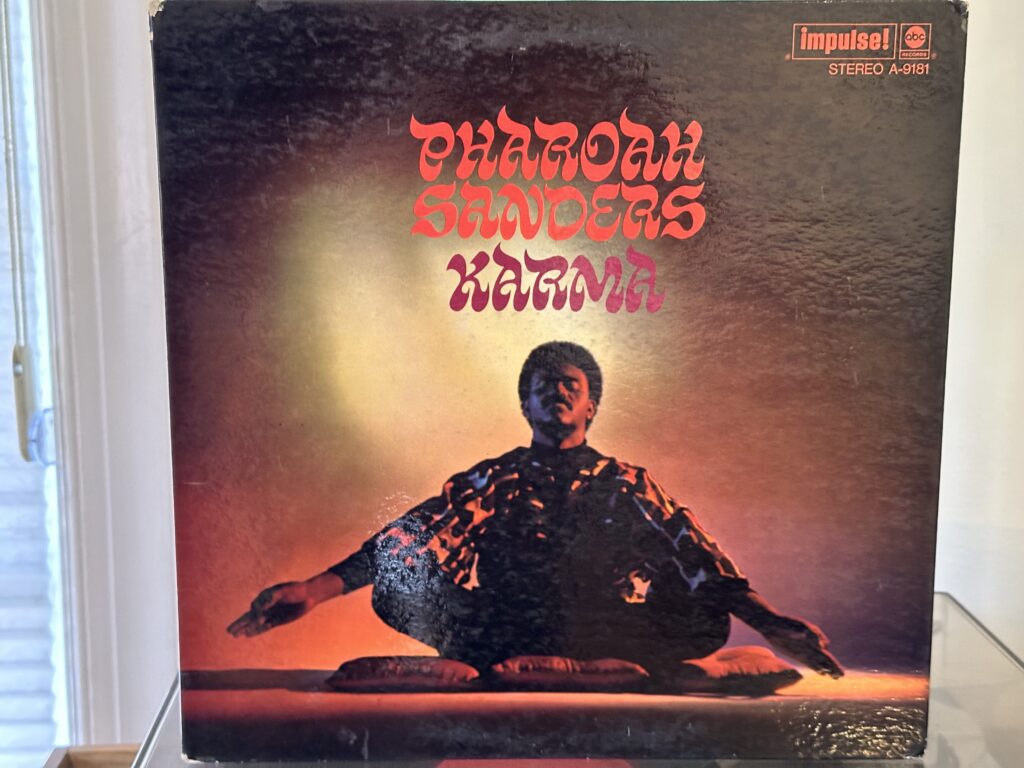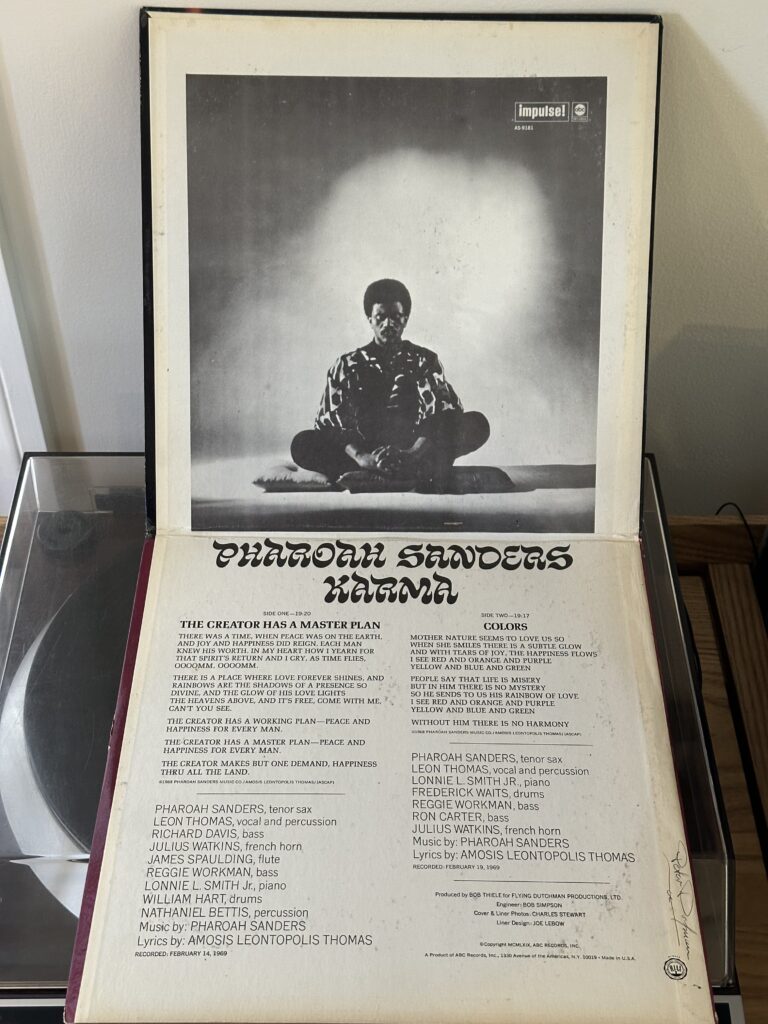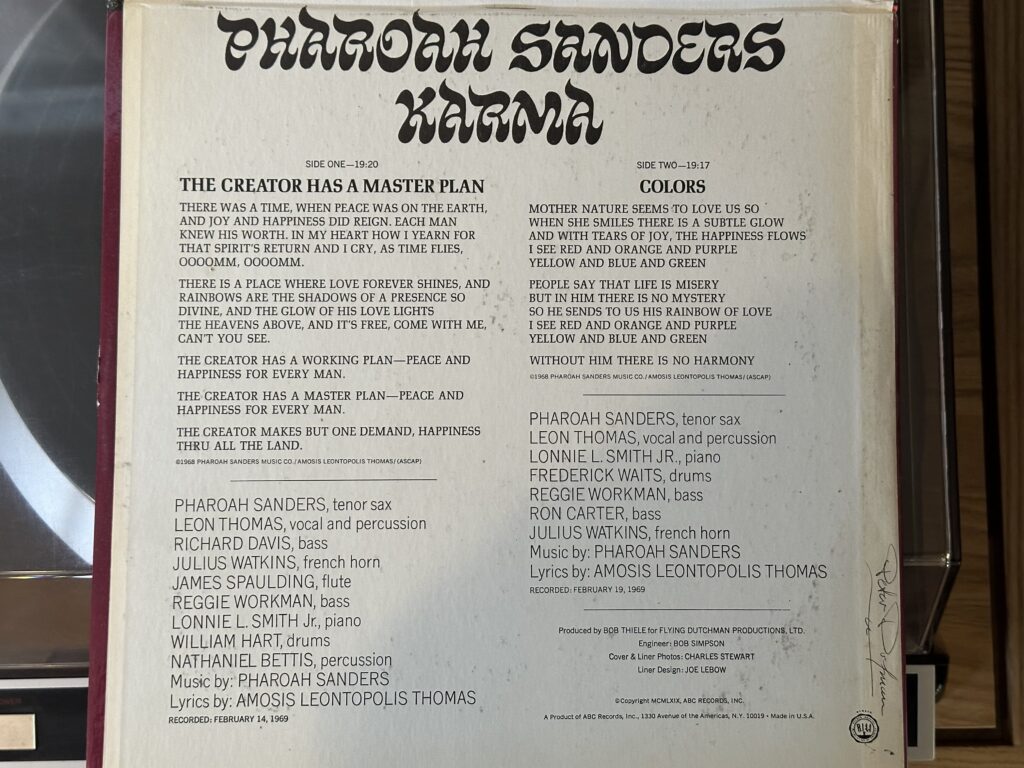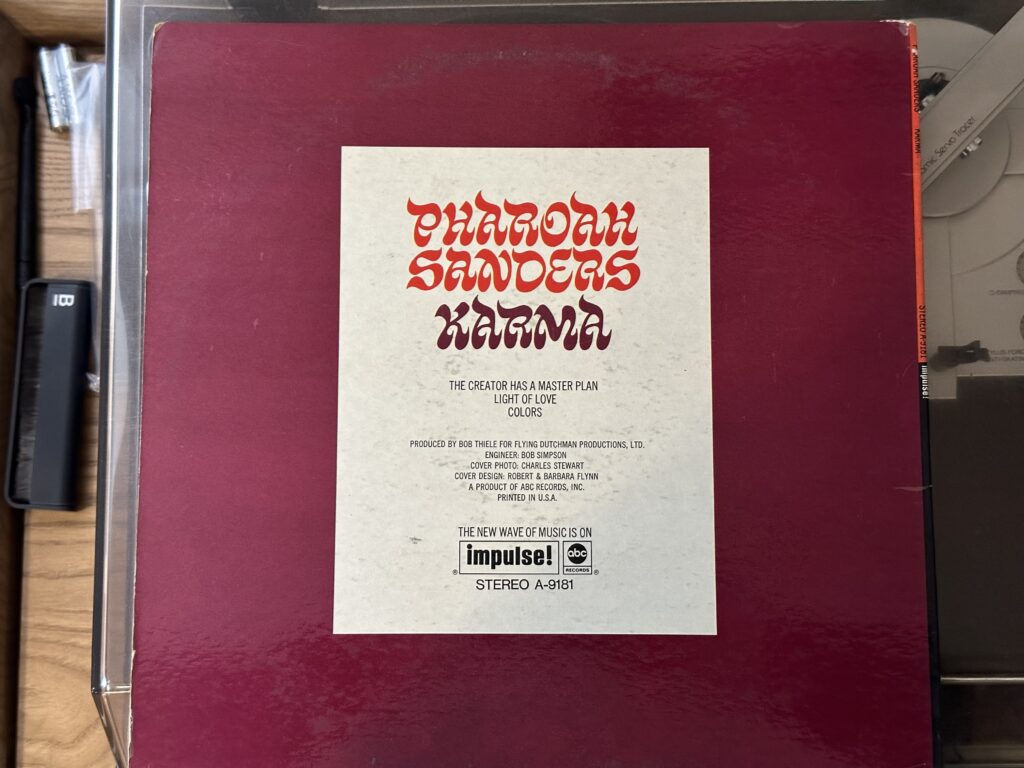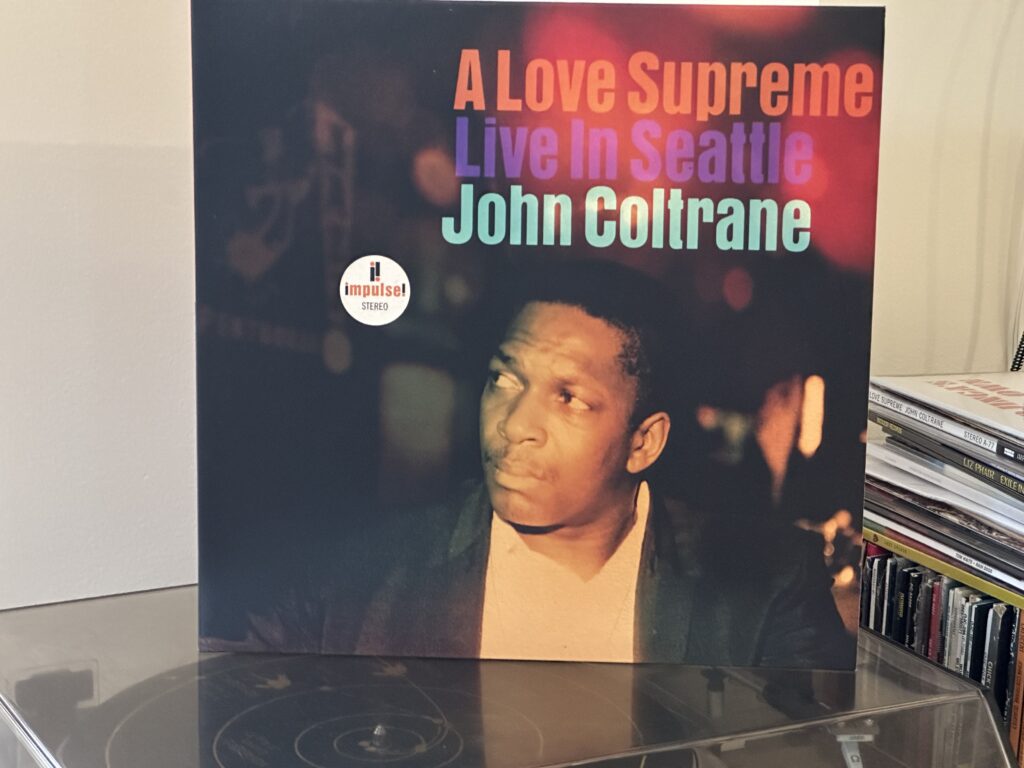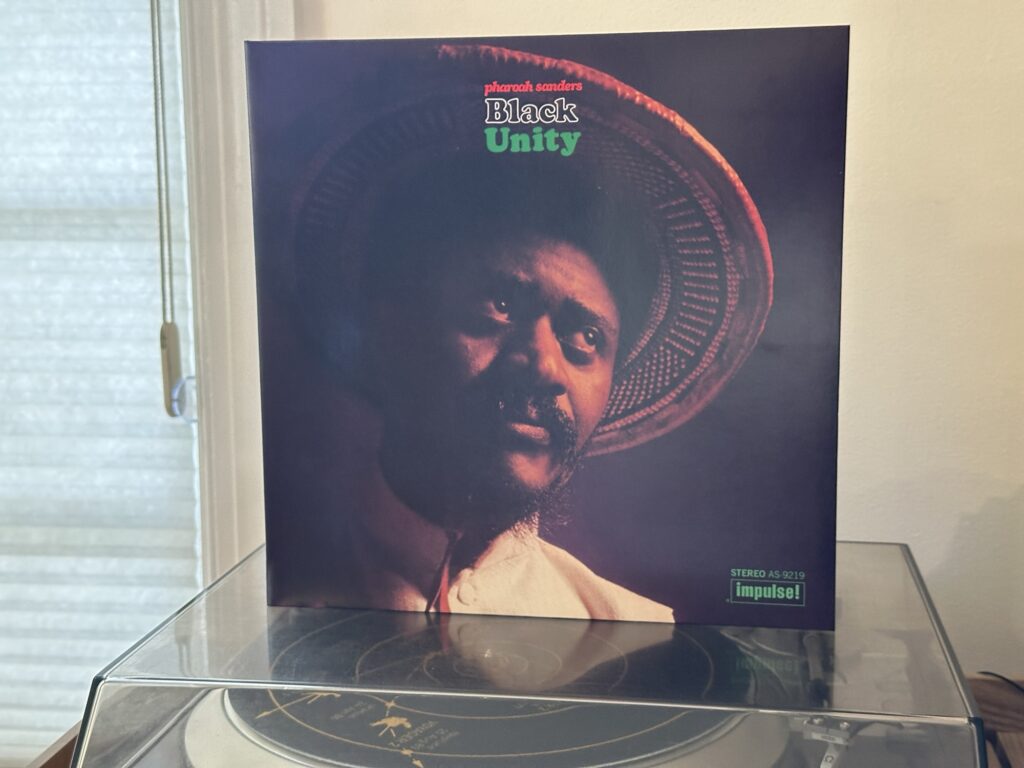
Album of the Week, May 11, 2024
When I was listening to free jazz in college and the years after, I had a fairly narrow conception of Pharoah Sanders’ contribution to the art. On the basis of performances like Meditations and Karma, I assumed that all his work was out there, shamanistic, wild. And while that is indeed a good description of some of his playing, it’s far from the whole story. Some of his performances preceding and following Karma are good jumping off points to make the story delightfully complex, starting with this one, recorded in November 1971.
We’ve seen before how issues of black power and civil rights influenced some of this music, particularly in John Coltrane’s “Alabama” (discussed in the context of Trane’s follow-up album Crescent) and in Archie Shepp’s poem for Malcolm X and elegiac salute to W.E.B. Dubois. Black Unity seems at once to be a nod to the Black Unity and Freedom Party, a Black Power political party in the UK, and a statement of musical purpose that underpins the group improvisation recorded here.
The group is top-notch, with Marvin “Hannibal” Peterson on trumpet, Carlos Garnett on flute and tenor sax, Joe Bonner on piano, Stanley Clarke and Cecil McBee on bass, Norman Connors and Billy Hart on drums, and Lawrence Killian on percussion. Bonner was an underappreciated hard bop pianist from Rocky Mount, North Carolina who had a series of collaborations with Hart and saxophonist Billy Harper in the 1970s as well as solo outings. Garnett played with Freddie Hubbard and with Art Blakey’s Jazz Messengers. Stanley Clarke might be the best known name on the album, having come to prominence as a founding member of Chick Corea’s Return to Forever and winning five Grammy awards for his jazz fusion work over the years. And Norman Connors had a varied career, sitting in for Elvin Jones with the John Coltrane Quartet when the group performed at his middle school (!), playing with Sanders, recording as a leader on Cobblestone Records, and switching to R&B in the mid-1970s.

The variety of talent that Sanders’ group brought to the collective improvisation accounts for some of its sheer exuberance. The entire album is one long 37-minute collective exploration of sound, most but not all centered around a deep-grooving three-note theme that emerges within the first minute out of a cluster of sound from the Stanley Clarke, Joe Bonner and the collective percussion section. From the groove, though, emerge other sounds – a sustained wash of what sounds like a hurdy-gurdy, the balafon, and finally a version of the groove theme from the three horns, played in unison. From there the music seems to overflow outward, with all the players going in different directions over the continued groove.
The first moment of “breakage” into free jazz in the collective comes from Sanders, whose horn begins to climb a rocky hill about eight minutes in. “Hannibal” Peterson plays with fierce intensity, alternating between chromatically ascending the scale and then playing an extended improvisation around the supertonic. And Garnett grounds his playing in the original key, bringing it back to the tonic. The horns pause for a second and a relatively brief moment of respite in which the forward pulse of the bass is the main motion gives us the breath we need to flip the record.
Side two opens with a Joe Bonney solo that leans into the upper reaches of the melody. Bonney’s work with other artists ran the gamut from wild to celebratory, but his playing here is solidly in the post-McCoy Tyner world; while a good chunk of his solo firmly subscribes to the Tyner block chords model, there’s also a moment of complete and utter freedom that seems to stop time before he shifts back into a more melodic mode that calls to mind some of Herbie Hancock’s mid-1960s Blue Note output. Sanders follows Bonney, this time on the balafon. The percussive nature of the instrument, which Wikipedia helpfully describes as a “gourd-resonated xylophone”, means that its sound is approximately equal parts tone and wooden thud, and the bassists and percussion step up to support and enhance the sound.
The last part of the work is driven by the basses and percussion. McBee gets a solo that quietly underscores the similarity of the main theme to the “A Love Supreme” theme and time stops for a minute as the two bassists trade ideas against each other. When the beat comes back, emerging from a cloud of clicking percussion, dueling pizzicato, and drone, it’s less frantic, more assured. There’s a higher pitched string instrument in the mix as well, perhaps a harp or koto, that together with the basses transports the entire soundscape for a few minutes to a different world. This entire section is the most eye opening, as the collective groove that has underpinned all the free exploration and melodic expansion seems to stand revealed. If Sanders was making a philosophical—or political—statement on this album, it might be in this revelation of common cause underneath many different expressions of black musical identity In the last three and a half minutes, the rest of the band re-enters to quietly bring the theme back home. When they stop, we hear a crowd burst into applause and calls of “Right on!,” providing the final mind-blowing moment of the album—that it was recorded as a single live performance.
Sanders would explore the axis between group improvisation, deep melodies, and ecstatic free jazz throughout the rest of his career. You can find more examples of any of the sides of his work throughout his discography; for more like Karma, check out “Hum-Allah-Hum-Allah-Hum-Allah” on his Jewels of Thought. By the mid-1970s he was playing more melodically (as you can hear in this great 1975 live set from Transversales Disques), and it’s that Pharoah that appears in his last recording, the 2021 Floating Points collaboration Promises. But regardless of whether he was playing fierce and free or achingly sweetly, the common core of all the work is searching (and finding) transcendence, putting him firmly in line with the work of his mentor Coltrane. We’ll get one last check-in with another Trane associate next week as we see how McCoy Tyner continued to evolve following his departure from Blue Note.
You can listen to this week’s album here:
